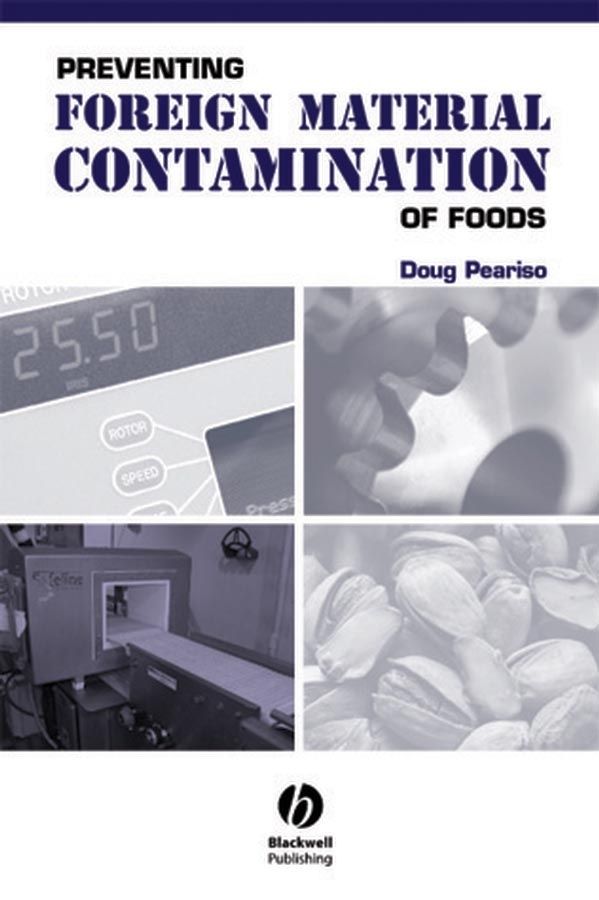Extraneous foreign material in food products is undeniably a physical hazard that must be mitigated by processors and food service establishments. Beyond this underlying threat to food safety, physical contaminants can impact the element most essential to an organization’s success – consumer confidence and trust in the producer and its brand. <i>Preventing Foreign Material Contamination of Foods</i> describes the business implications of non-conforming products as it provides processors with conceptual strategies that can be implemented to detect, eliminate, and prevent physical contamination in common commodities utilized within food processing. The text offers a comprehensive contemporary discussion and ready professional reference on the contamination of food products with foreign material (from both product related and product non-related sources).<br /> <p>Recent and past regulatory enforcement actions and case studies provide the reader with clear real world examples of how producers have successfully and unsuccessfully handled issues related to foreign material contamination. Numerous tables and illustrations assist in developing HACCP plans, or when evaluating the validity of existing plans as an internal/external auditor. Statistical sampling concepts are presented in combination with industry standard test methods in a visual manner that is easily understandable. Prevention and evaluation of foreign material contamination are discussed with a farm to table focus along with the latest information on technology/strategies utilized for the detection and culling of foreign material in food products including: metal detection, density separation, x-ray of product streams, magnetic separation techniques, automated color and shape recognition, proper microscopic examination for micro-physical contaminants, and analytical test methods for determining the origin of macroscopic contaminants.<br /> </p> <p>Real world strategies of applying these technologies are profiled for readers to better visualize applications possible within their own environments. The essential concepts of installation qualification, operational qualification and ongoing verification of equipment performance are also presented. Additionally, the reader will be able to identify, quantitatively evaluate, and set management policy on “situations of risk” encountered in the company’s day-to-day environment. Strategies and concepts cover the full spectrum of food production:<br /> </p> <ul> <li style=”list-style: none”><br /> </li> <li>Whole fruit and vegetable processors<br /> </li> <li>Juice and puree processors<br /> </li> <li>Cereal and bakery production<br /> </li> <li>Dairy and cultured food productsMeat and poultry processing<br /> </li> <li>Confectionary and snack food manufacturing<br /> </li> <li>Food service establishments and restaurants</li> </ul> <br /> <p>Written for quality assurance, HACCP, and related professionals charged with maintaining the integrity of their food product, <i>Preventing Foreign Material Contamination of Foods</i> offers conceptual, pragmatic, and <i>implementable</i> strategies to detect and eliminate physical contamination during food processing.</p>
Preventing Foreign Material Contamination of Foods
₹19,790.00
This book is currently not in stock. You are pre-ordering this book.




